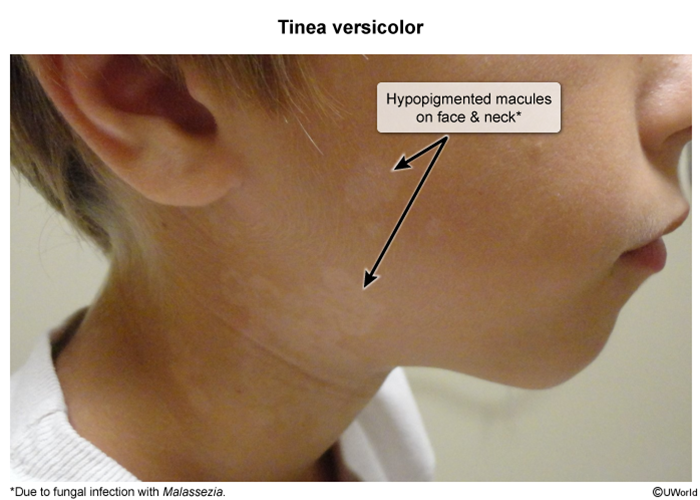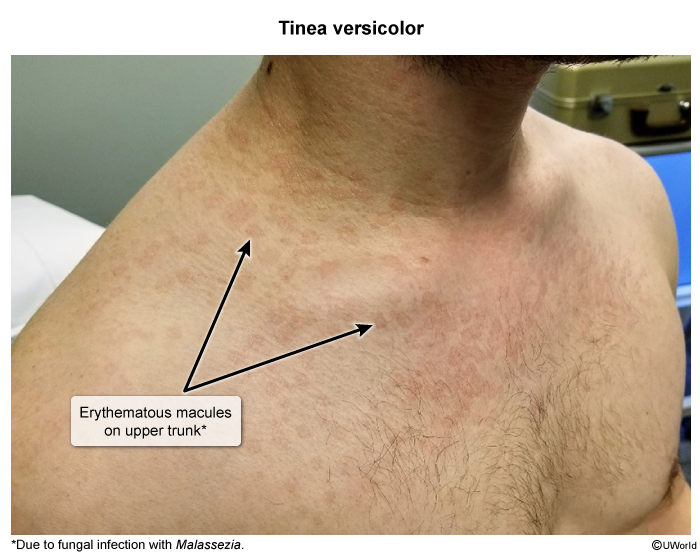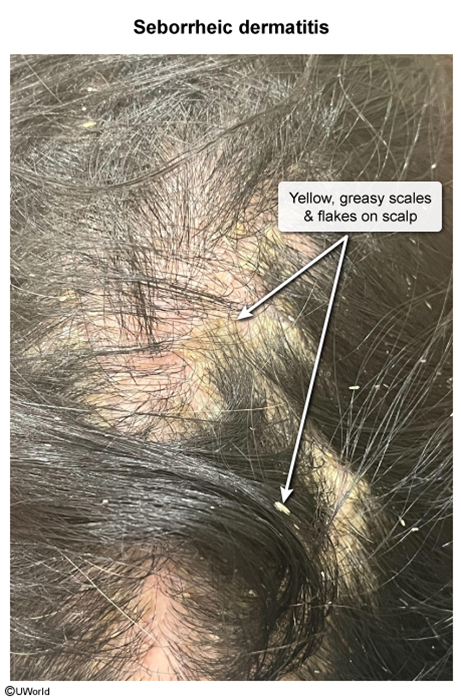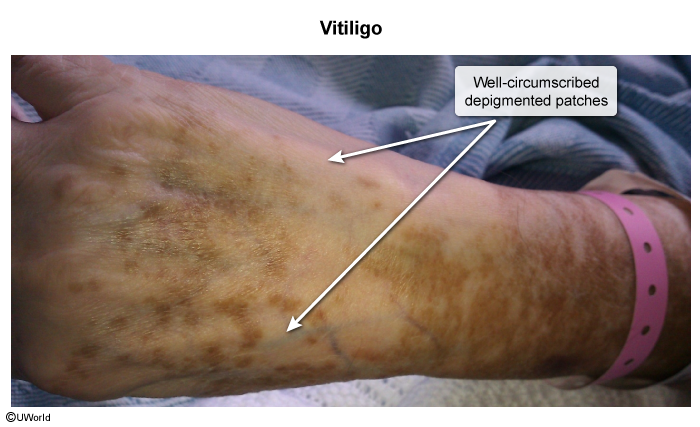Tinea Versicolor
Article Sections
Introduction
Tinea versicolor, also known as pityriasis versicolor, is a superficial fungal infection of the skin caused by Malassezia species (eg, M globosa, M furfur). Although typically benign, tinea versicolor can cause cosmetic concerns due to its characteristic skin discoloration.
Pathophysiology and risk factors
The pathogenesis of tinea versicolor starts with the overgrowth of Malassezia species, which are nondermatophytic, lipid-dependent yeasts. These yeasts are part of normal skin flora and proliferate under certain conditions, such as increased sebum production, warm temperatures, and high humidity. They colonize the stratum corneum and interfere with pigment transfer to keratinocytes. The affected skin does not tan when exposed to the sun, leading to the characteristic hypopigmented patches seen in tinea versicolor.
Several factors predispose patients to tinea versicolor, including:
Continue Learning with UWorld
Get the full Tinea Versicolor article plus rich visuals, real-world cases, and in-depth insights from medical experts, all available through the UWorld Medical Library.
Images





